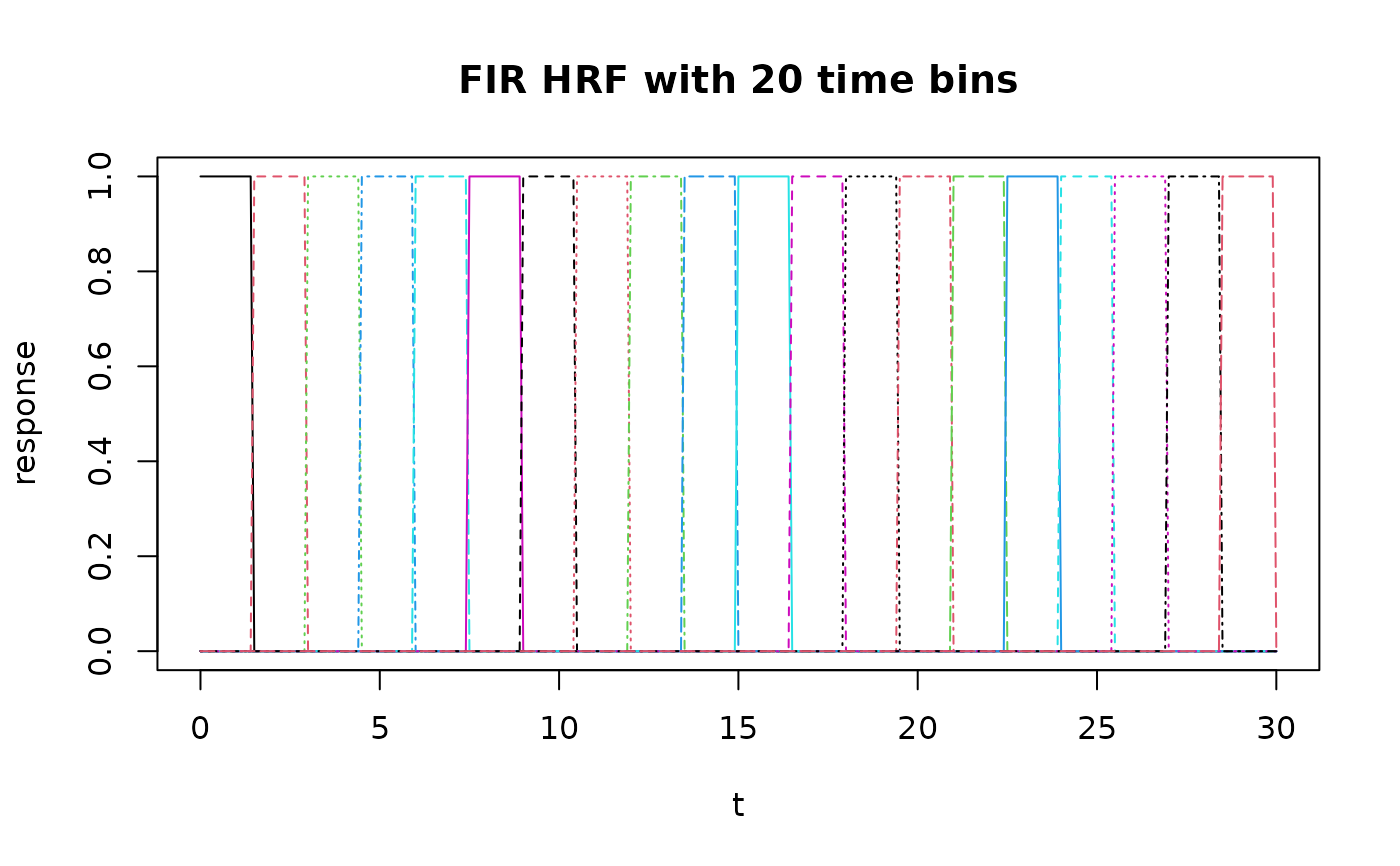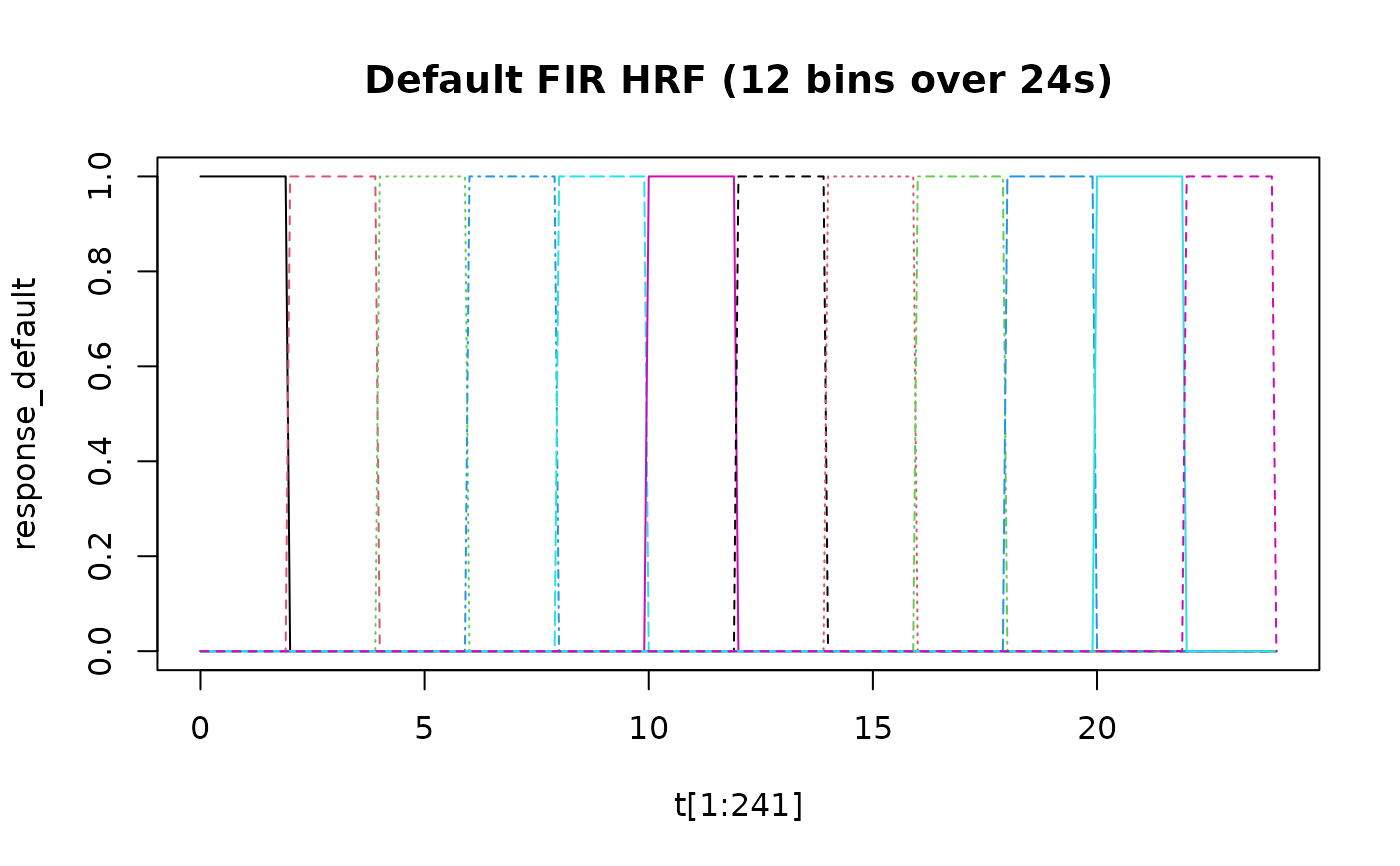Generates an HRF object using Finite Impulse Response (FIR) basis functions with custom parameters. Each basis function represents a time bin with a value of 1 in that bin and 0 elsewhere.
Details
The FIR basis divides the time window into nbasis equal bins.
Each basis function is an indicator function for its corresponding bin.
This provides maximum flexibility but requires more parameters than
smoother basis sets like B-splines.
See also
HRF_objects for pre-defined HRF objects,
getHRF for a unified interface to create HRFs,
hrf_bspline_generator for a smoother alternative
Examples
# Create FIR basis with 20 bins over 30 seconds
custom_fir <- hrf_fir_generator(nbasis = 20, span = 30)
#> Warning: Parameters nbasis, span, bin_width are not arguments to function fir and will be ignored
t <- seq(0, 30, by = 0.1)
response <- evaluate(custom_fir, t)
matplot(t, response, type = "l", main = "FIR HRF with 20 time bins")
 # Compare to default FIR with 12 bins
default_fir <- HRF_FIR
response_default <- evaluate(default_fir, t[1:241]) # 24 seconds
matplot(t[1:241], response_default, type = "l",
main = "Default FIR HRF (12 bins over 24s)")
# Compare to default FIR with 12 bins
default_fir <- HRF_FIR
response_default <- evaluate(default_fir, t[1:241]) # 24 seconds
matplot(t[1:241], response_default, type = "l",
main = "Default FIR HRF (12 bins over 24s)")
